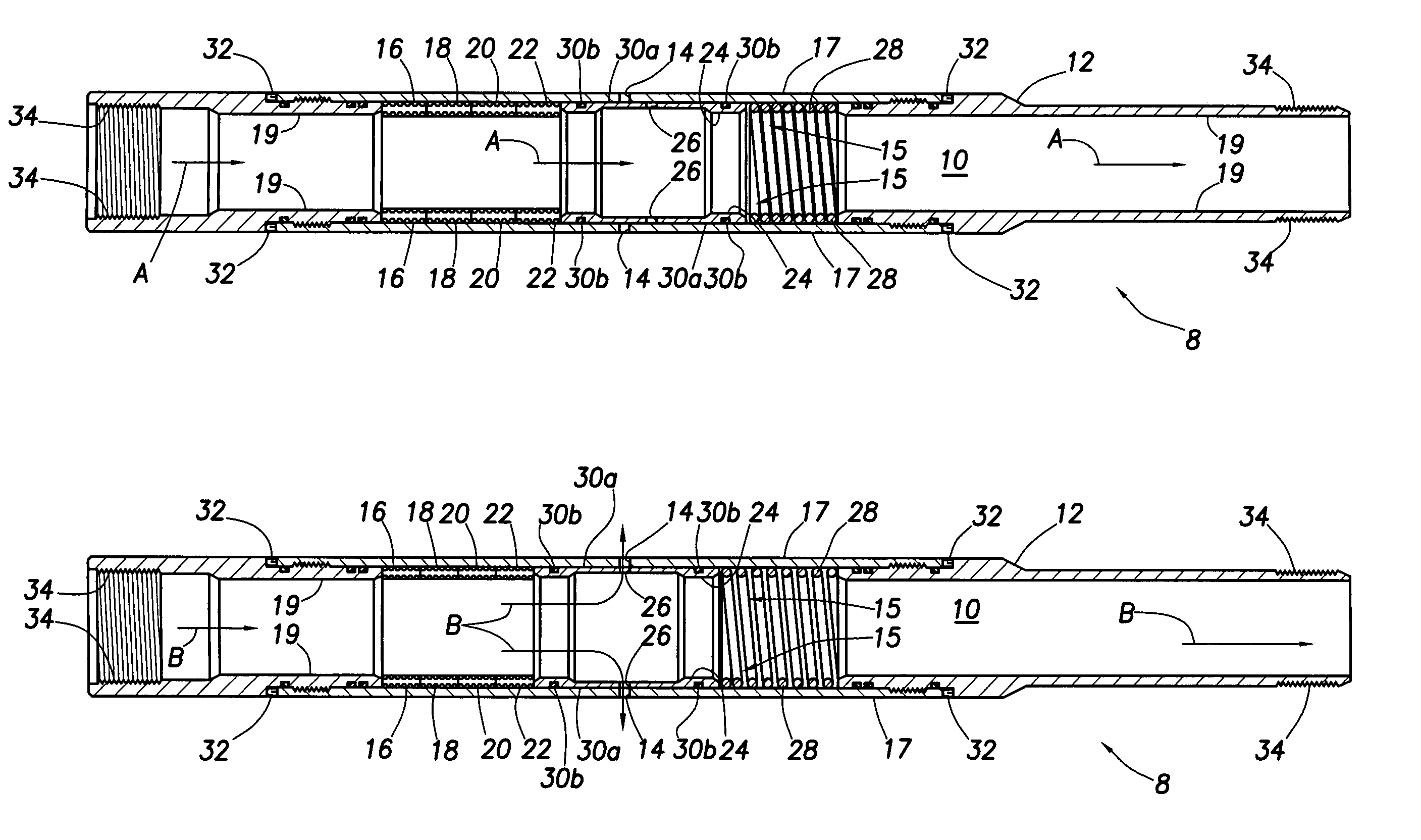Thermally-controlled valves and methods of using the same in a wellbore
a technology of thermal control valve and wellbore, which is applied in the direction of wellbore/well accessories, insulation, instruments, etc., can solve the problems of difficult recovery of oil from subterranean formations, high temperature gradient along the wellbore, and areas that are hotter and colder, so as to achieve easy transportation and reduce the viscosity of oil.
- Summary
- Abstract
- Description
- Claims
- Application Information
AI Technical Summary
Benefits of technology
Problems solved by technology
Method used
Image
Examples
Embodiment Construction
[0020]As used herein, a thermally-controlled downhole tool is defined as controlling a function of a tool disposed in a wellbore between first and second positions and intermediate positions therebetween, and vice versa, in response to changes in temperature. A control means is disposed downhole in situ with the tool. For example, controlling and / or sensing elements may be integral with the tool and thus may be contained within a tool housing. Also, the sensing and controlling elements may be separate or combined. The thermally-controlled tool may comprise a thermally-controlled valve (TCV) for controlling the production and / or injection of material such as steam downhole. The TCV is described in more detail below.
[0021]In an embodiment, a control signal is not transmitted from the surface. The temperature change is sensed downhole by the thermally-controlled tool, and the function of the tool is self-controlled accordingly. For example, the control element may comprise a mechanical...
PUM
 Login to View More
Login to View More Abstract
Description
Claims
Application Information
 Login to View More
Login to View More - R&D
- Intellectual Property
- Life Sciences
- Materials
- Tech Scout
- Unparalleled Data Quality
- Higher Quality Content
- 60% Fewer Hallucinations
Browse by: Latest US Patents, China's latest patents, Technical Efficacy Thesaurus, Application Domain, Technology Topic, Popular Technical Reports.
© 2025 PatSnap. All rights reserved.Legal|Privacy policy|Modern Slavery Act Transparency Statement|Sitemap|About US| Contact US: help@patsnap.com



